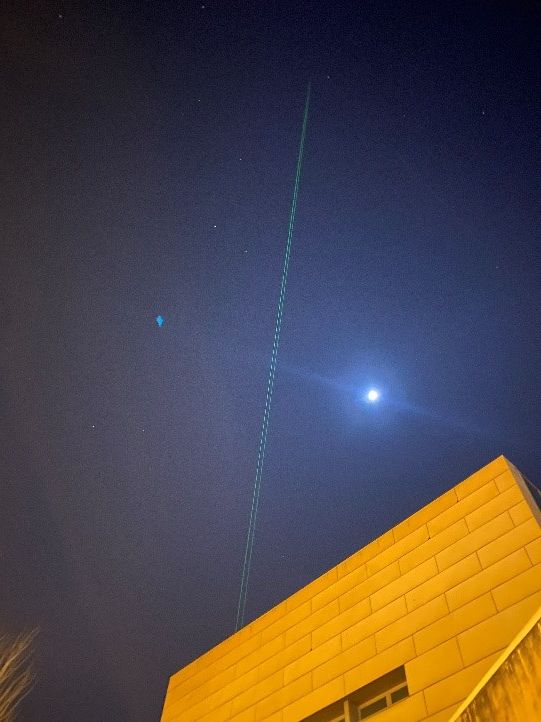
Urban background. (37.16°N, 3.61°W, 680m asl).
The station combines long-term monitoring of vertical distribution of atmospheric aerosol, with in-situ measurements for the characterization of aerosol particles, as well as the monitoring of clouds and atmospheric and solar radiation at several spectral ranges. Some of the instruments based in UGR station are suitable to be moved for participation in campaigns.
At UGR station, it is located the Laboratory of Atmospheric Geochemistry. It is designed for the physicochemical characterization of environmental samples. The laboratory provides various elementary tools and materials for the chemical speciation of samples such as: filter treatments for sampling atmospheric particulate matter; filtration of environmental samples; leaching methodologies; and gravimetric analysis. The laboratory contains specific equipment for the samples treatment and characterization (high-temperature oven, high-precision balance, filtration equipment, ultrapure water systems).
In addition, at UGR station, it is located the Laboratory of Aerosol Spectrometry.
Equipment
| AEROSOL REMOTE SENSING | ||
|---|---|---|
|
Instrument |
Characteristics |
ACTRIS Variables |
|
Multi-spectral Raman Lidar (MULHACEN) |
Emission at 355, 532, 1064 nm Detection at 355, 532, 1064 nm and at Raman 353.9, 408 and 530.2 nm |
Attenuated backscatter profile Volume depolarization profile Particle backscatter coefficient profile Particle extinction coefficient profile Lidar ratio profile Ångström exponent profile Backscatter-related Ångström exponent profile Particle depolarization ratio profile Particle layer geometrical properties (height and thickness) Particle layer optical properties (extinction, backscatter, lidar ratio, Ångström exponent, M CARS DC NRT-S 60 m depolarization ratio, optical depth, fluorescence intensity) Column integrated extinction Planetary boundary layer height Spectral Downward Sky Radiances Direct Sun/Moon Extinction Aerosol Optical Depth (column) |
|
Multi-spectral Raman Lidar, Dual-LMRD (ALHAMBRA) |
Emission at 1064 nm, 532 nm, and 355 nm Elastic channel detection at 1064, 532, and 355 nm with depolarization capabilities at 532 and 355 nm Rotational Raman detection at 1064, 532 nm and 355 nm Vibrational Raman detection at 532 and 355 nm Raman Fluorescence detection at 355 nm (broadband filter and spectrometer HORIBA 1250M module) |
|
|
Scanning Raman Lidar, LR111-D200 (VELETA) |
Emission at 355 nm Detection at 355 nm Raman detection at 387 nm (N2) |
|
|
Sun photometer |
Radiance detection at 340, 380, 440, 500, 675, 870, 940, and 1020 nm |
|
| CLOUD REMOTE SENSING | ||
|---|---|---|
|
Instrument |
Characteristics |
ACTRIS Variables |
|
Microwave Radiometer |
22-31 GHz (water vapor) and 51-58 GHz (O2) |
Radar reflectivity factor Radar Doppler velocity Radar Doppler spectral width Radar linear depolarisation ratio Attenuated backscatter profile Cloud/aerosol target classification Drizzle drop size distribution Drizzle water content Drizzle water flux Ice water content Liquid water content Dissipation rate of TKE (turbulent kinetic energy) Atmospheric boundary layer classification Liquid water path Temperature profile Relative humidity profile Integrated water vapor path |
|
Cloud Radar |
Emission at 94GHz Vertical and scanning |
|
|
Ceilometer |
Emission at 1064 nm |
|
|
Doppler lidar (ÁBREGO) |
Emission at 1500 nm | |
|
Doppler lidar with depolarization channel (SIROCO) |
Emission at 1565 nm Pulse repetition rate of 15 kHz Range resolution: 30 m Cross-polar receiver channel |
|
| TRACE GASES REMOTE SENSING | ||
|---|---|---|
|
Instrument |
Characteristics |
ACTRIS Variables |
|
PANDORA-238s1 |
UV spectrometer in 280-530 nm wavelength range |
Vertical column densities measurements of NO2 Vertical column densities measurements of O3 Vertical column densities measurements of SO2 Vertical column densities measurements of HCHO |
|
UVVIS MAXDOAS
|
Spectral Range: 270 - 530 nm |
Ozone column Formaldehyde column Formaldehyde lower tropospheric profile NO2 column |
| AEROSOL IN SITU | ||
|---|---|---|
|
Instrument |
Characteristics |
ACTRIS Variables |
|
Integrating nephelometer (InNe) |
TSI 3563 3 wavelengths (450, 550 and 700 nm) |
Particle light scattering and backscattering coefficients Particle number size distribution - mobility diameter Particle number size distribution-optical and aerodynamic diameter Particle number concentration Nanoparticle number size distribution Nanoparticle number concentration Cloud condensation nuclei number concentration Mass concentration of particulate organic and elemental carbon Mass concentration of particulate organic tracers Mass concentration of non-refractory particulate organics and inorganics Mass concentration of particulate element |
|
Scanning particle mobility sizer (SMPS) |
SMPS (TSI) Long and short DMA X-Rays and Kr-85 radioactive sources CPC 3772/3775 |
|
|
Aerodynamic particle size spectrometer (APS) |
TSI Mod. 3221 |
|
|
Multi-angle absorption photometer (MAAP) |
MAAP (Thermo 5012) Single wavelength (637 nm) |
|
|
Aethalometer |
AE-33 |
|
|
High-volume samplers |
MCV sa, both sequential and manual operation mode |
|
|
TOF-ACSM |
Aerodyne |
|
|
CCN Counter |
CCN200 (DMT) Dual column CCN counter Scanning SS High-time resolution |
|
|
Rapid-E |
Automatic Bioaerosol Monitor. Fluorescence spectrometer |
|
|
Dry-wet deposition samplers |
TISCH Scientific |
|
|
Total deposition collector |
MCV sa |
|
|
Low Cost Air Quality Sensor |
Modulair, Quantaq |
|
|
Polar Nephelometer |
Airphotons CCD Camera Individual particles Scattered light from UV to IR (3 wavelengths) Scattered polarized light |
|
| TRACE GASES IN-SITU REACTIVES | ||
|---|---|---|
|
Instrument |
Characteristics |
ACTRIS Variables |
|
Fixed platform |
Thermo (CO, NOx, SO2 and O3), Syntech (VOCs) and TEOM (PM10 |
Ozone column |
Instrument
Characteristics
Variables
Radiosondes
Graw, DFM-06
Balloons 100 g, 350 g
vertical range: upper troposphere-lower stratosphere
Vertical profiles of pressure, temperature, relative humidity, wind speed and direction
Automatic Weather Station
Weather sensors
Radiometers
Data logger
Surface values of pressure, temperature, relative humidity, precipitation, wind speed and direction, solar irradiation (broadband, UVA, UVB and thermal infrared)
Disdrometer
Parsivel
Particle size and velocity of liquid and solid precipitation